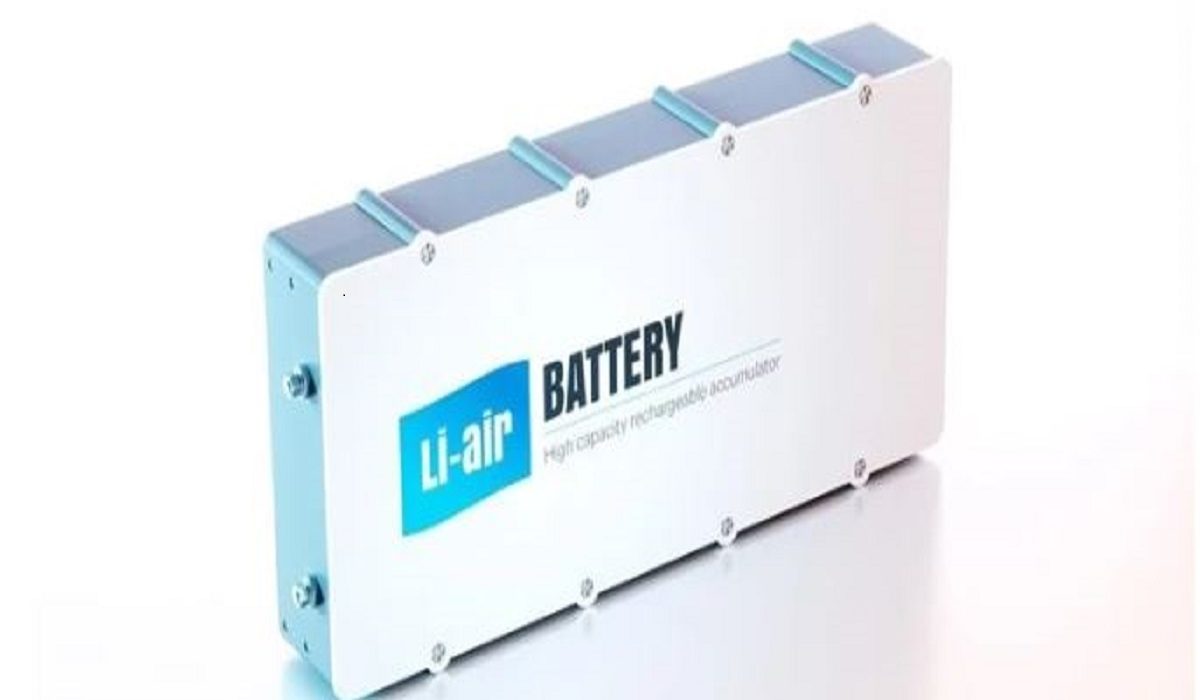Modern energy storage relies heavily on rechargeable batteries, which power everything from electric cars to portable electronics. Lithium-air batteries (Li-O₂) have long been considered a game-changer among new battery technologies because of their extraordinarily high theoretical energy density. However, their real-world application has been hampered by practical issues such their short lifespan, poor reaction kinetics, and high overpotential.
The addition of an imidazole iodide salt (1,3-dimethyl imidazolium iodide, DMII) as a redox mediator to enhance performance and longevity, the novel solution now suggested by a research team from the Dalian Institute of Chemical Physics, CAS, headed by Zhong-Shuai Wu, in cooperation with Xiangkun Ma from Dalian Maritime University. Their method opens the door for more practical lithium-air technology by greatly improving charge transmission, lowering overpotential, and stabilizing the battery.
Understanding How Lithium-Air Batteries Operate
Lithium-air batteries work by using oxygen from the air as a reactant in their electrochemical operations, as opposed to conventional lithium-ion batteries, which transfer lithium ions between two solid electrodes. The following crucial steps are part of the working mechanism:
1. Energy Release (Discharge Process)
A porous air-breathing cathode and a metallic lithium anode make up the battery.
Lithium metal oxidizes at the anode during battery discharge, releasing positively charged Li⁺ ions into the electrolyte.
These lithium ions move to the cathode, where they combine with atmospheric oxygen (O₂) to create lithium peroxide (Li₂O₂), which releases energy.
2. Energy Storage (Charge Process)
Li₂O₂ breaks down during battery recharging, releasing oxygen and bringing Li⁺ ions back to the anode.
After being reduced once more to metallic lithium, the lithium ions are re-deposited onto the anode.
Lithium-air batteries are lighter and more energy-dense than traditional lithium-ion batteries because of this cycle, which enables them to store and release energy utilizing oxygen from the surrounding environment.
Issues Impeding the Performance of Lithium-Air Batteries
Lithium-air batteries have a number of serious practical drawbacks that hinder their widespread use, despite their theoretical benefits.
1. Slow Reaction Kinetics and High Overpotential
- Poor conductivity and slow electrochemical kinetics make the conversion of lithium peroxide (LiO₂) to lithium ions (Li⁺) intrinsically slow.
- This results in a high overpotential, which lowers overall efficiency by requiring more energy to drive the reactions.
2. Poor Oxygen Diffusion and Cathode Clogging
- The cathode’s porous structure, blocked by the accumulation of LiO₂, which lowers oxygen accessibility and impairs battery efficiency.
- The quantity of active material available for energy storage is constrained by the limited oxygen transport capacity.
3. Side Reactions and Electrolyte Decomposition
- Electrolyte breakdown at high voltages results in undesirable byproducts that gradually deteriorate the battery.
- The low cycle life and capacity loss caused by these side reactions render lithium-air batteries unsuitable for long-term use.
4. Lithium Dendrite Formation and Anode Instability
- Because of the strong electrolyte-lithium metal anode reaction, unstable interfacial layers arise and eventually deteriorate.
- Lithium dendrites, which are metal formations that resemble needles, can also develop on the anode and result in short circuits and battery failure.
An Innovative Approach: The Function of Imidazole Iodide Salt (DMII)
The study team added 1,3-dimethyl imidazolium iodide (DMII) to the electrolyte in order to get around these restrictions. There are two main purposes for this compound:
- Serving as Charge Transport’s Redox Mediator
- Anode-Electrolyte Interface Stabilization
1. Redox Mediation: Improving Transport of Charge
By means of a redox reaction cycle, the iodide ions (I⁻) in DMII promote electron transfer:
- A quicker reduction reaction at the cathode is made possible by the oxidation of I⁻ to I₃⁻ during discharge, which aids in the passage of electrons to oxygen.
- I₃⁻ is reduced back to I⁻ during charging, effectively removing electrons from Li₂O₂ and quickening the evolution of oxygen.
By lowering the energy barrier for the processes, this redox mediation mechanism raises the discharge capacity and drastically lowers the overpotential (0.52 V).
2. Electrolyte Stabilization and Anode Protection
During discharge, the five-membered imidazole ring that makes up the DMI⁺ ions in DMII interacts with the lithium ions (Li⁺).
- By promoting effective lithium transport, this interaction stabilizes lithium deposition and inhibits dendritic development.
- On the anode surface, DMI⁺ ions also create an extremely thin and persistent protective layer.
By limiting direct contact between the electrolyte and lithium metal, this layer serves as a physical barrier, extending battery life and minimizing undesirable side effects.
Experiments Validation and Performance Enhancements
Extensive electrochemical testing of lithium-air batteries improved with DMII was carried out by the study team. The findings showed:
- Low Overpotential: Compared to conventional lithium-air systems, this system has a much lower overpotential of just 0.52 V.
- Extended Cycle Life: A notable improvement over traditional configurations, stable performance for 960 hours.
- High Reversibility: There were little adverse reactions during the smooth creation and breakdown of LiO₂.
These results demonstrate the promise of lithium-air batteries augmented with DMII as a next-generation energy storage technology.
Implications for Battery Technology’s Future
The commercialization of lithium-air batteries has advanced significantly with the success of DMII as a stabilizing agent and redox mediator. With some refinement, this technology could:
- Boost energy density above and beyond lithium-ion batteries to transform portable electronics and electric cars.
- Increase longevity to increase the viability of lithium-air batteries for long-term uses.
- Make simpler, more effective battery designs possible to save manufacturing costs.
Scalability, practical durability, and integration with current battery architectures are still obstacles, though. For even higher efficiency, future studies will concentrate on improving electrolyte formulations and investigating different redox mediators.
In conclusion
Energy storage technology has advanced with the addition of imidazole iodide salt (DMII) to lithium-air batteries. This breakthrough greatly improves battery performance and lifespan by tackling important restrictions such as high overpotential, cathode clogging, electrolyte instability, and anode deterioration.
Lithium-air batteries may finally realize their long-awaited potential as researchers continue to hone this strategy, opening the door for future energy storage systems that are lighter, more durable, and more effective.

